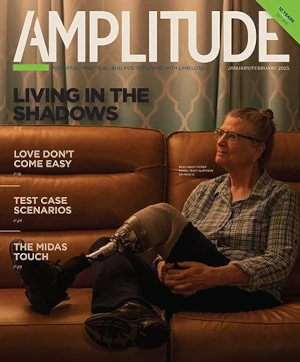Researchers at University of Utah (U of U) Health found that pairing music with one of four pain medications offered a promising complementary strategy to treat pain. In particular, the ibuprofen-music pairing improved analgesic outcomes in an inflammation pain mouse model by more than 90 percent, while the cannabidiol-music and galanin analog NAX 5055-music pairings reduced inflammation by 70 percent. The results of the study were published online in Frontiers in Neurology.
“We know these drugs work without music, but they can produce toxicity and adverse effects,” said Grzegorz Bulaj, PhD, associate professor at U of U Health and senior author on the paper. “The holy grail is to combine the right drug with this new paradigm of music exposure, so we do not need as much drug for analgesic effects.”
The researchers evaluated this new strategy using two pain models. One model mimics inflammatory pain and one mimics surgical pain. The study was conducted four times to explore pairing music with ibuprofen, cannabidiol, levetiracetam, and the galanin analog NAX 5055.
When paired with music, ibuprofen reduced pain responses in the inflammation pain model by 93 percent, as compared to the drug alone. In addition, music and cannabidiol or NAX 5055 reduced swelling by 21 and 9 percent, respectively, in the inflammatory pain model. Music alone also reduced pain by 77 percent in the surgical pain model.
“There is emerging evidence that music interventions can alleviate pain when administered either alone or in combination with other therapies,” said Cameron Metcalf, PhD, research assistant professor at U of U Health and first author on the paper. “I was particularly excited to see reduced swelling in the inflammatory pain model.”
According to Metcalf, medications currently available to treat inflammation do not show such a robust response on such a short timescale.
More research is needed to determine if such results will be duplicated in people.
“If we could package music and other nonpharmacological therapies into mobile apps and deliver them with drugs and it works, it will be better than drugs alone,” Bulaj said.
This article was adapted from information provided by U of U Health.



